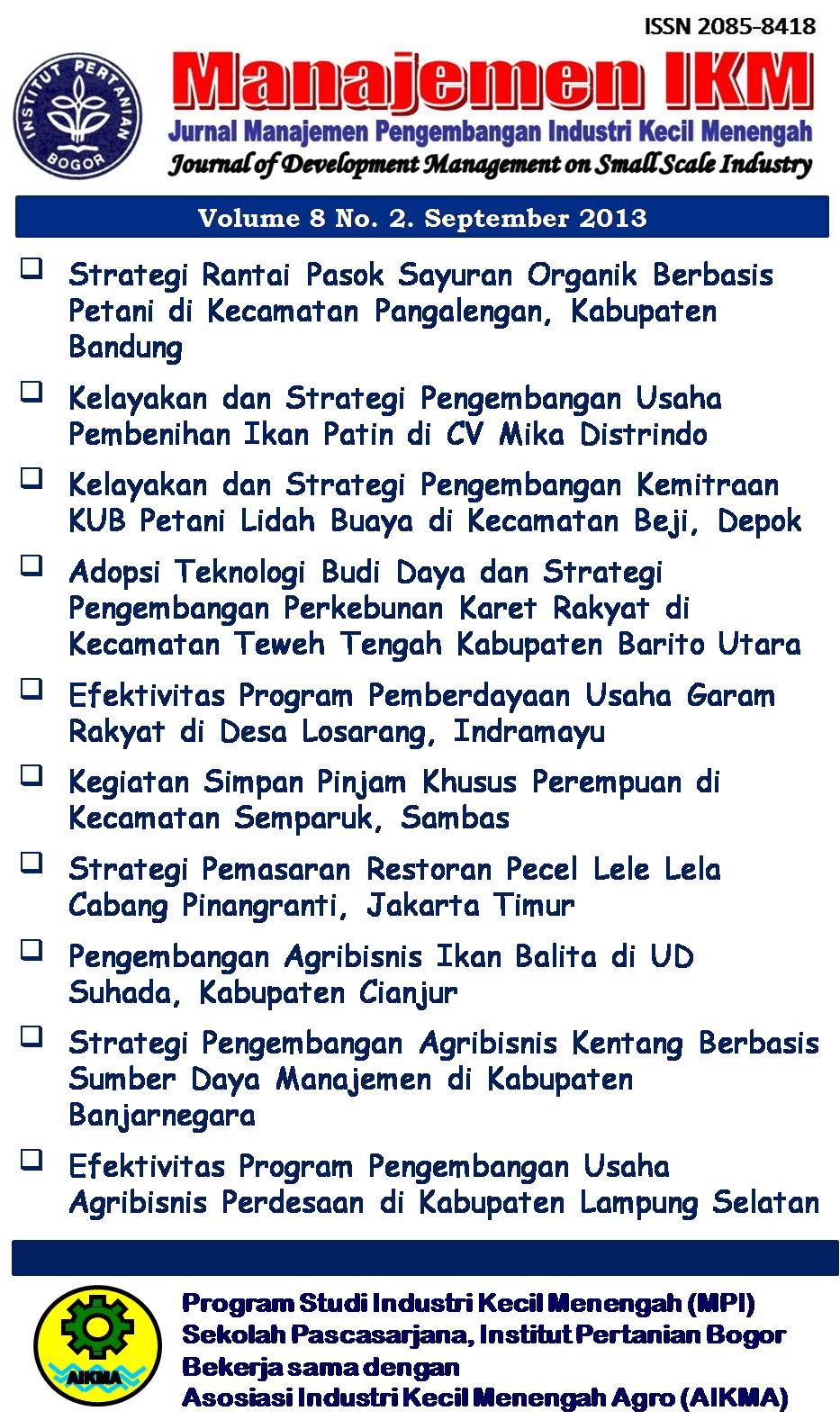Strategi Pemasaran Restoran Pecel Lele Lela Cabang Pinangranti, Jakarta Timur
Abstract
Pecel Lele Lela Restaurant branches Pinangranti is a restaurant that first presents the traditional Deep-fried Catfish food menu into a unique concept with modern restaurant management. This Research aims to (1) find out feasibility, (2) understand the marketing mix of services and assessments of consumer againt services marketing mix so far applied, (3) analysis the factors of internal and external environment that affect marketing strategies, and (4) establish the priority of alternative marketing strategies that can be applied. Sampling technique in this research is purposive sampling. The method used in this research is descriptive method that focuses on invesment and business development aspect, as well as NPV, B/C, PBP, IRR, SWOT and QSPM analysis. Based on financial criteria feasibility on discount rate of 6% NPV Rp2.535.752.046. Net B/C 4,22. IRR 21,34% (IRR > 6%).The return on investment (PBP) which is based on the value of now with the discount rate of 6% are 1.81. It means that the restaurant pecel lele lela branch Pinangranti, East Jakarta worthy to be implemented.The resulted total scores value of both Internal Factor Evaluation (IFE) and External Factor Evaluation (EFE) were respectively 2,543 and 2,310 which puts the position on quadrant V, which hold and maintain. Based on the calculation of QSP matrix, the most interesting strategy to apply is creating a new variation of the menu.
Keywords: Feasibility, Marketing Strategic, Pecel Lele, Restaurant


